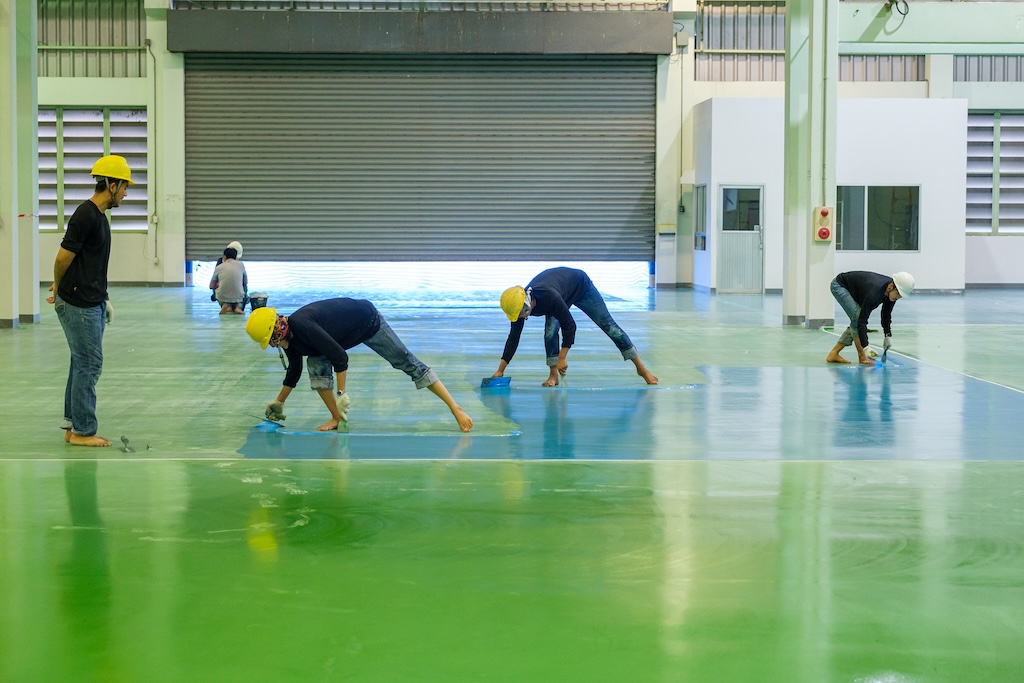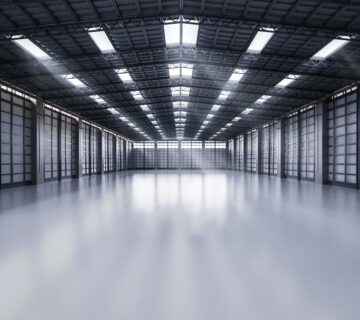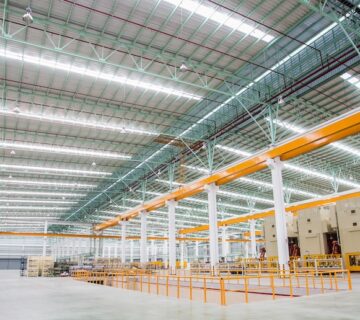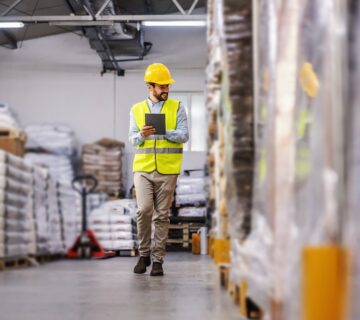Ventilation is essential for any painting project, especially in expansive warehouses. Commonly used paints and solvents can pose serious health hazards without proper air flow. Ensuring adequate ventilation helps eliminate harmful fumes and introduces fresh air, safeguarding workers and facilitating effective paint drying. This blog underscores the importance of ventilation in warehouse painting, emphasizing its role in project safety and success. Good ventilation practices are not just regulatory requirements but are vital for maintaining air quality and worker health. This makes them a critical component of project management and execution strategies.
Health and Safety Concerns
Paints and solvents release volatile organic compounds (VOCs) and other harmful chemicals into the air. Inadequate ventilation can lead to a buildup of these substances, posing health risks to workers, such as respiratory problems, headaches, and nausea. Ensuring good air circulation is crucial to mitigate these risks, and this involves using proper ventilation equipment and practices. Health concerns are not only immediate but can also have long-term effects, making it imperative to maintain a safe breathing environment.
Improving Paint Drying and Quality
Proper ventilation helps in the drying process of the paint, ensuring a better-quality finish. It prevents issues like blistering or peeling, which can occur due to trapped moisture or uneven drying. Consistent air flow helps to evenly distribute drying times, reducing the risk of imperfections and ensuring a smooth, professional finish on all painted surfaces. It’s not just about the immediate look of the paint, but also its longevity and resilience.
Reducing Fire Hazards
Many paint products are flammable, making adequate ventilation crucial to reduce vapor concentrations and minimize fire risks in warehouses. This is particularly vital in confined spaces where fumes can accumulate and potentially ignite. It’s also essential to regularly monitor ventilation systems to ensure they are effective and providing enough air exchange. This proactive approach is key in maintaining safety and preventing fire hazards in any painting project.
Legal and Compliance Aspects
There are often legal requirements and guidelines related to workplace safety, which include maintaining proper ventilation during painting projects. Failure to comply can result in legal repercussions and potential fines. Companies must be aware of Occupational Safety and Health Administration (OSHA) regulations and local safety codes, which stipulate the standards for adequate ventilation. Adhering to these rules not only ensures compliance but also demonstrates a commitment to employee welfare.
Techniques for Effective Ventilation
Effective ventilation can be achieved through a combination of natural and mechanical means. This might include opening doors and windows, using fans and air movers, and installing temporary ventilation systems for the duration of the project. It is essential to create a strategic ventilation plan that considers the layout of the space and the types of substances being used. Sometimes, it may be necessary to employ specialized ventilation equipment to handle large volumes of air or remove contaminants from specific areas.
Planning for Ventilation
Ventilation should be a key part of the planning process for any warehouse painting project. This process involves assessing the space, understanding the properties of the paints and solvents used, and determining the best methods to ensure adequate air circulation. Planning should also account for the duration of the painting process and any drying times, ensuring that the ventilation system supports the needs of the project from start to finish. A well-ventilated workspace is essential for both safety and the overall success of the painting job.
Final Thoughts
Proper ventilation is critical for worker safety and achieving high-quality results in warehouse painting projects. It’s an essential component that must be considered during both planning and execution stages. Ventilation impacts everything from worker health to paint drying and is required for legal compliance. With careful planning and the correct equipment, effective ventilation ensures a safer, more efficient, and successful project. For more information on safe and effective painting practices, visit our website at sisupainting.com and our blog at sisupainting.com/blog.





No comment